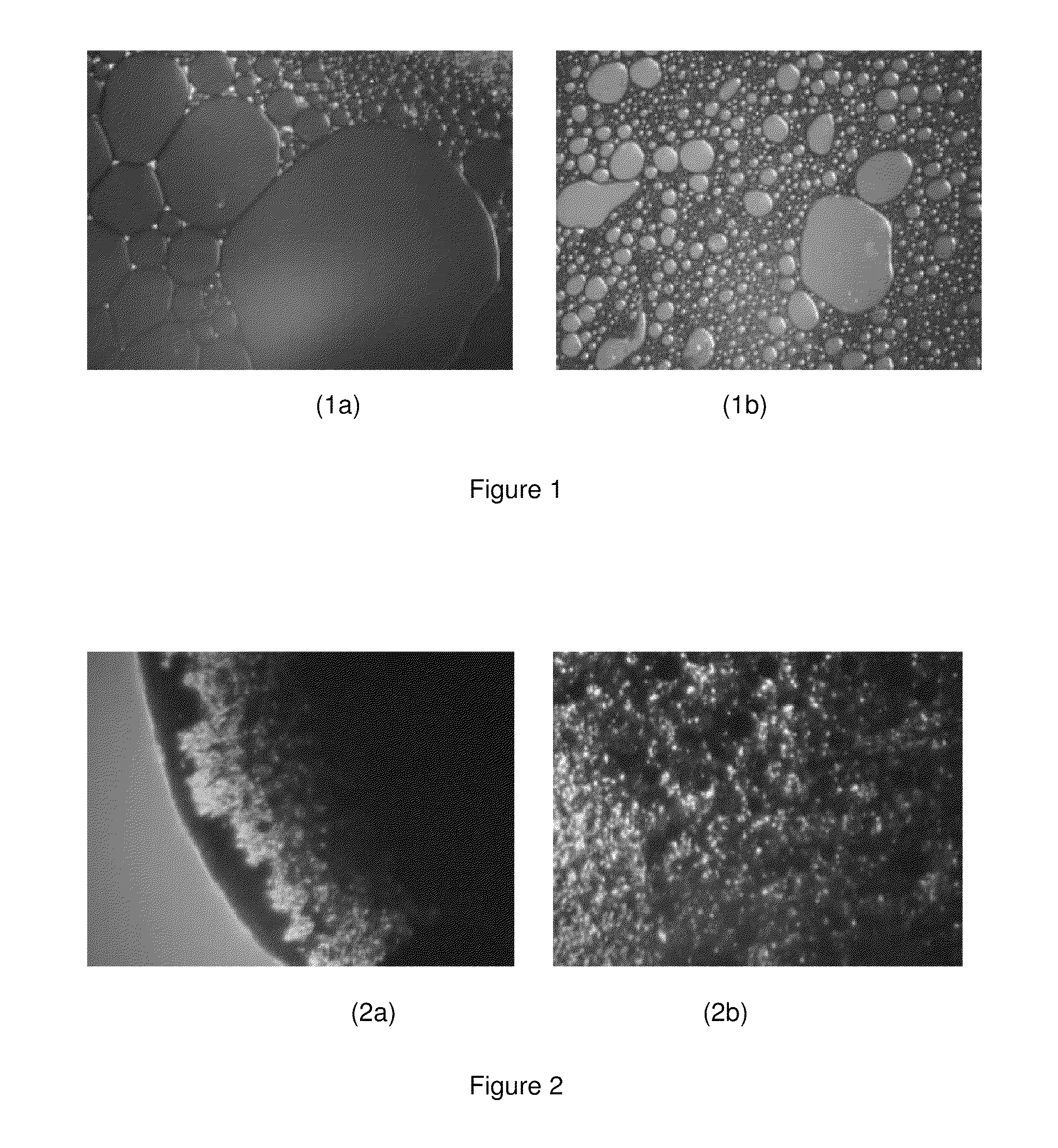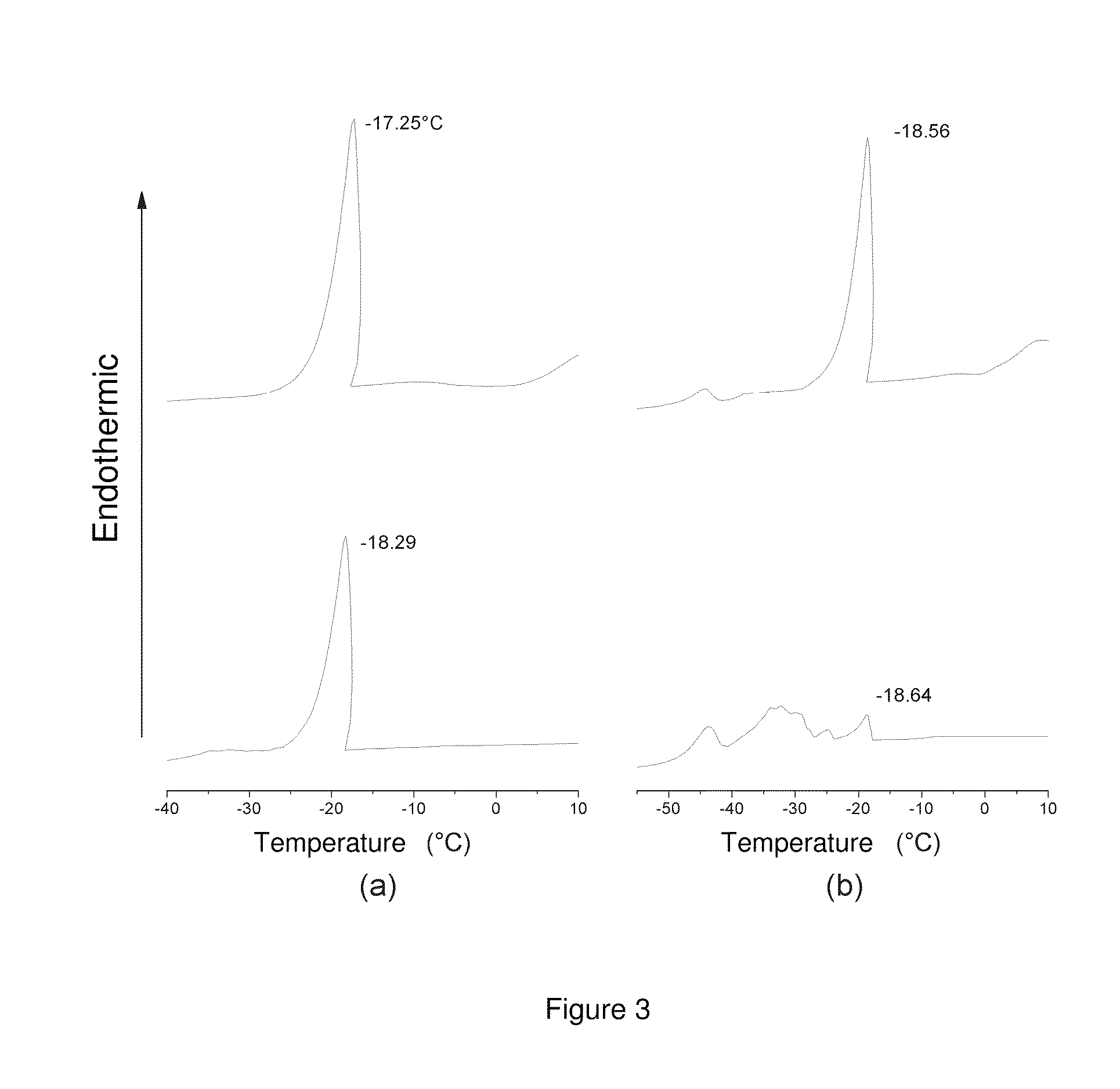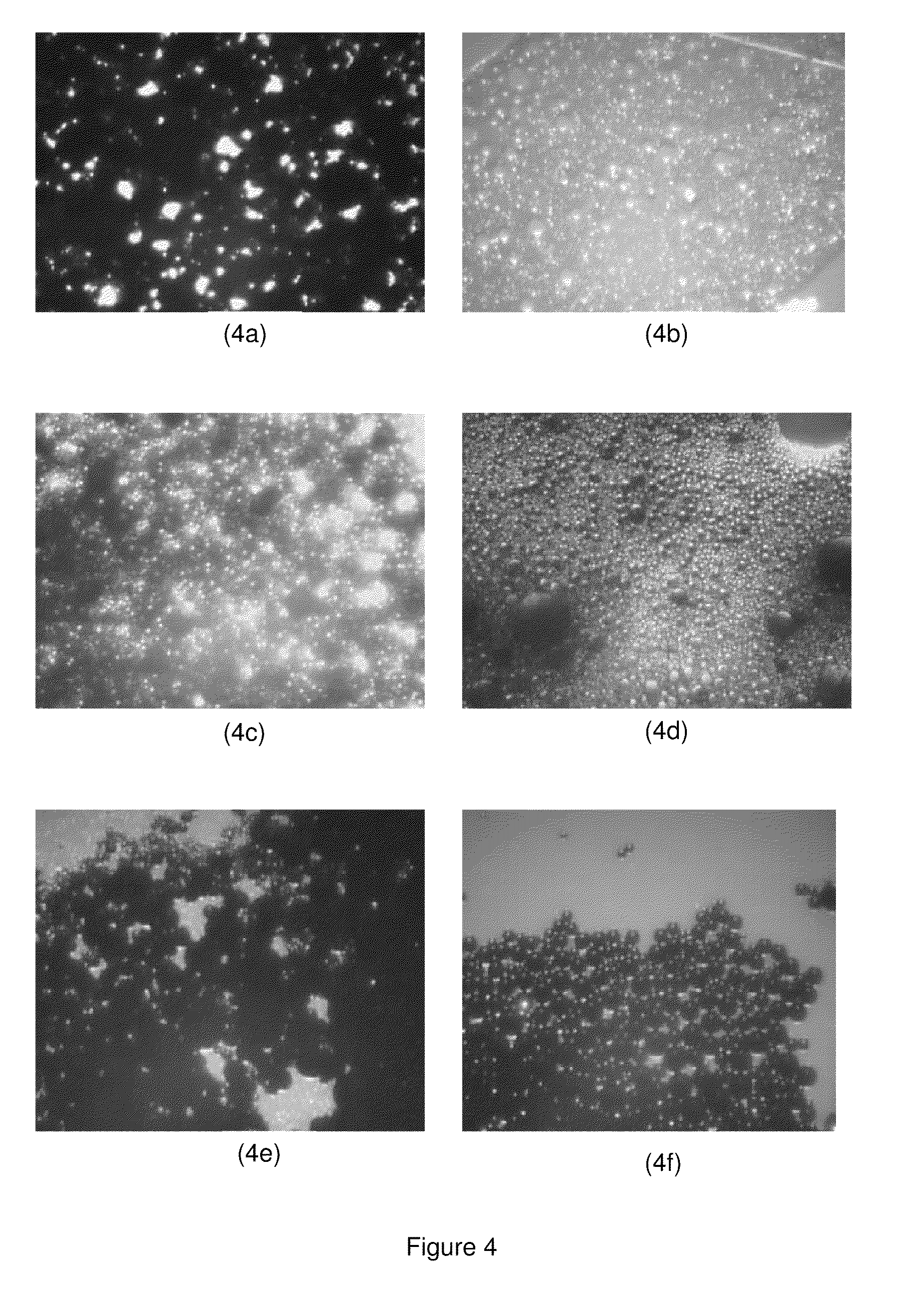Process of preparing improved heavy and extra heavy crude oil emulsions by use of biosurfactants in water and product thereof
a technology of biosurfactants and crude oil, applied in the field of biosurfactant materials, can solve the problems of increasing solubility, clogging problems, and requiring a second operation, and achieve the effect of high emulsification capacity and stability
- Summary
- Abstract
- Description
- Claims
- Application Information
AI Technical Summary
Benefits of technology
Problems solved by technology
Method used
Image
Examples
example 1
[0042]According to the preparation procedure of the emulsions of the present invention, a crude-in-water emulsion was obtained without any surfactant, as follows: On a 30 vol % basis of water in the emulsion, the water was heated to 30° C., and the system was kept at a constant temperature during the whole process. Meanwhile, heavy crude (16.4 API) was also heated separately to the same temperature. Crude at 30° C. was poured slowly into the water with constant agitation (propeller) and also keeping the mixture temperature constant at 30 C. Once all the crude was added, the mixture was homogenized at 1800 rpm to form an emulsion by keeping the velocity constant for 2 minutes. In the next two minutes the solution was left standing. This latter homogenizing and standing process was repeated 3 times at the same temperature and homogenizing level conditions. The optical microscopy analysis of the emulsion showed crude droplets of differing sizes dispersed in water (FIG. 1a), as well as ...
example 2
[0043]Continuing with the process of the present invention, emulsions without a surfactant were prepared having different salt contents, preferably NaCl, of between 3.5 and 10.5 weight % NaCl. 35, 7 and 100.5 grams of NaCl were dissolved in 1 liter of distilled water by agitating at room temperature and obtaining solutions of 3.5, 7.0 and 10.5 weight % of this salt in water in order to emulate sea water with different salt contents. An emulsion of 70 vol % crude in 30 vol % water for each NaCl concentration was prepared. The water containing salt is poured into the preparation container and heated to 30° C., keeping this temperature constant while the crude is added. Heavy crude oil (16.4° API) was added following the same sequence as in Example 1 to form the emulsions. Once the emulsion preparations are finished, in order to evidence the salt concentration effect, each emulsion was analyzed by evaluating the resistivity, stability and optical microscopy. Resistivity study showed mu...
example 3
[0044]According to the procedure of the present invention, a series of emulsions were prepared by obtaining in a first phase of this preparative method a highly diluted crude-in-water emulsion by adding a commercial chemical surfactant, such as sodium dodecylsulphate (SDS) and salt-free, referred to as the precursor emulsion. Starting from a basis of calculation of 90 vol % of water in the resulting emulsion, this was mixed with approximately 600 mg of the surfactant SDS at room temperature. Both components premix of the surfactant and water and the crude were heated separately at 30° C. and agitated to maintain a homogeneous temperature. Once the temperature is controlled at 30° C., heavy crude of 16.4° API was poured into the surfactant / water premix by keeping temperature and agitation constant until the mixing process is completed. The mixture was homogenized for 2 minutes and then left standing another 2 minutes until 3 homogenizing-standing cycles were completed in order to obt...
PUM
| Property | Measurement | Unit |
|---|---|---|
| temperature | aaaaa | aaaaa |
| vol % | aaaaa | aaaaa |
| vol % | aaaaa | aaaaa |
Abstract
Description
Claims
Application Information
 Login to View More
Login to View More - R&D
- Intellectual Property
- Life Sciences
- Materials
- Tech Scout
- Unparalleled Data Quality
- Higher Quality Content
- 60% Fewer Hallucinations
Browse by: Latest US Patents, China's latest patents, Technical Efficacy Thesaurus, Application Domain, Technology Topic, Popular Technical Reports.
© 2025 PatSnap. All rights reserved.Legal|Privacy policy|Modern Slavery Act Transparency Statement|Sitemap|About US| Contact US: help@patsnap.com



